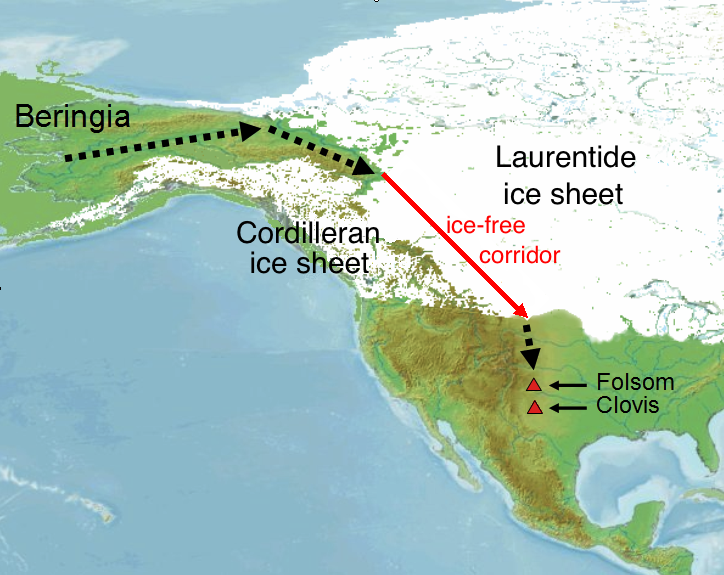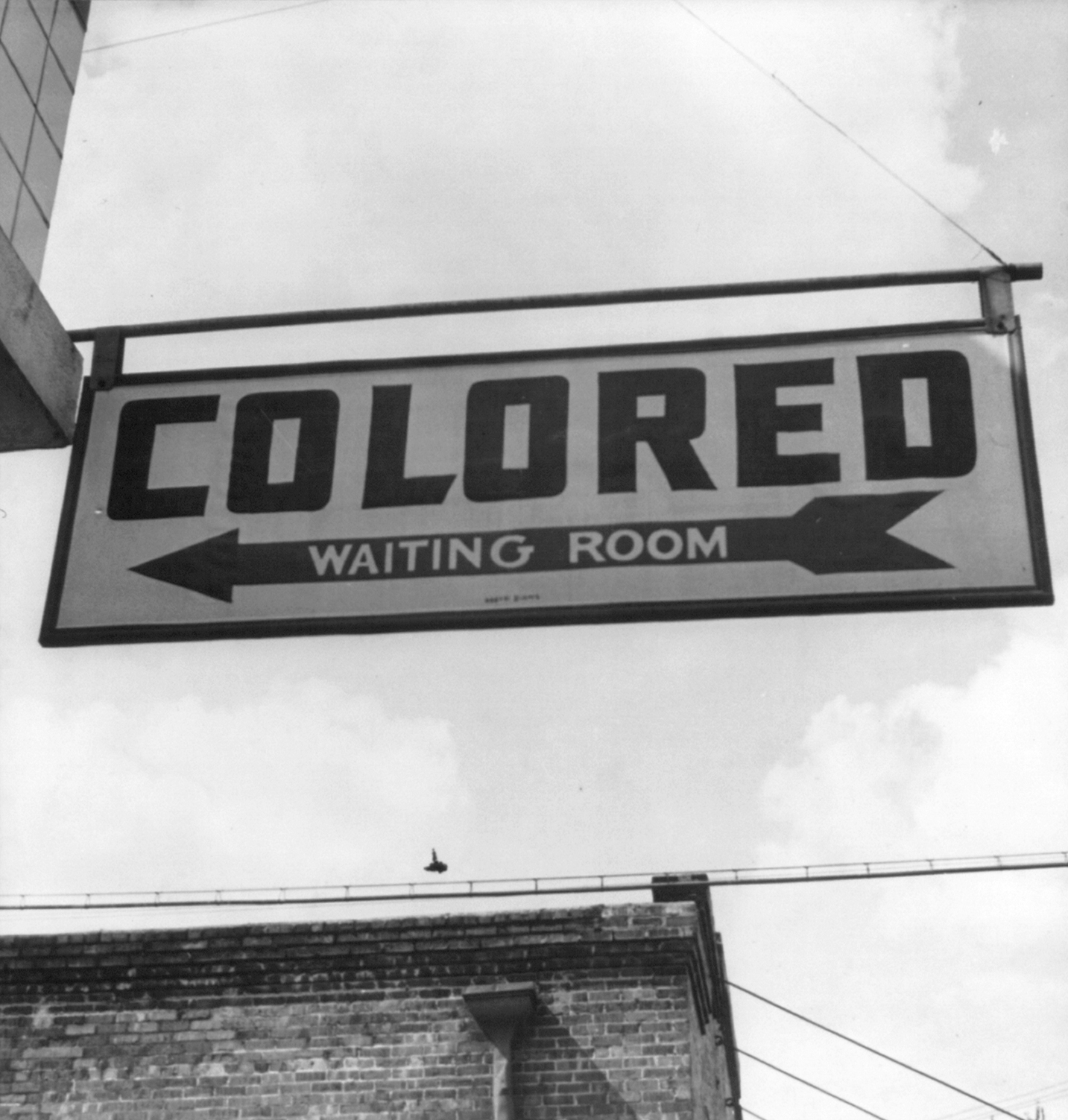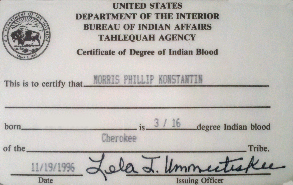|
Dawes Rolls
The Dawes Rolls (or Final Rolls of Citizens and Freedmen of the Five Civilized Tribes, or Dawes Commission of Final Rolls) were created by the United States Dawes Commission. The commission was authorized by United States Congress in 1893 to execute the General Allotment Act of 1887. Traditionally, the land in these tribal communities had been held communally. With the establishment of the Dawes Commission, the ruling was made by the colonial agents to divide up the land into parcels and institute a system of individual ownership in accordance with US laws, overriding the treaty and tribal laws of the region.Angie Debo, ''And Still the Waters Run: The Betrayal of the Five Civilized Tribes'' (Princeton: Princeton University Press, 1940; new edition, Norman: University of Oklahoma Press, 1984), p.39 . In order to allot the communal lands, citizens of the Five Civilized Tribes (Cherokee, Chickasaw, Choctaw, Creek, and Seminole) were to be enumerated and registered by the US governm ... [...More Info...] [...Related Items...] OR: [Wikipedia] [Google] [Baidu] |
Dawes Commission
The United States, American Dawes Commission, named for its first chairman Henry L. Dawes, was authorized under a rider to an Indian Office appropriation bill, March 3, 1893. Its purpose was to convince the Five Civilized Tribes to agree to cede tribal title of Native Americans in the United States, Indian lands, and adopt the policy of dividing tribal lands into individual allotments that was enacted for other tribes as the Dawes Act of 1887. In November 1893, President Grover Cleveland appointed Dawes as chairman, and Meridith H. Kidd and Archibald S. McKennon as members. During this process, the Indian nations were stripped of their communally held national lands, which was divided into single lots and allotted to individual members of the nation. The Dawes Commission required that individuals claim membership in only one tribe, although many people had more than one line of ancestry. Registration in the national registry known as the Dawes Rolls has come to be critical in issues ... [...More Info...] [...Related Items...] OR: [Wikipedia] [Google] [Baidu] |
Chitto Harjo
''Chitto Harjo'' (also known as Crazy Snake, Wilson Jones, Bill Jones, Bill Snake, and Bill Harjo; 1846 – April 5, 1912) was a leader and orator among the traditionalists in the Muscogee Creek Nation in Indian Territory at the turn of the 20th century. He resisted changes which the US government and local leaders wanted to impose to achieve statehood for what became Oklahoma. These included extinguishing tribal governments and civic institutions and breaking up communal lands into allotments to individual households, with United States sales of the "surplus" to European-American and other settlers. He was the leader of the Crazy Snake Rebellion on March 25, 1909 in Oklahoma. At the time this was called the last "Indian uprising". Early life Born in the Muscogee Creek Nation in Indian Territory after the tribe was removed from Alabama in the 1830s, Wilson Jones was a Muscogee Creek Indian. He was better known by his Creek name of Chitto Harjo, meaning "Crazy Snake." ''Ch ... [...More Info...] [...Related Items...] OR: [Wikipedia] [Google] [Baidu] |
History Of The United States
The history of the lands that became the United States began with the arrival of Settlement of the Americas, the first people in the Americas around 15,000 BC. Native American cultures in the United States, Numerous indigenous cultures formed, and many saw transformations in the 16th century away from more densely populated lifestyles and towards reorganized polities elsewhere. The European colonization of the Americas began in the late 15th century, however most colonies in what would later become the United States were settled after 1600. By the 1760s, the Thirteen Colonies, thirteen British colonies contained 2.5 million people and were established along the East Coast of the United States, Atlantic Coast east of the Appalachian Mountains. After French and Indian Wars, defeating France, the British government imposed a series of taxes, including the Stamp Act 1765, Stamp Act of 1765, rejecting the colonists' constitutional argument that new taxes needed their approval. ... [...More Info...] [...Related Items...] OR: [Wikipedia] [Google] [Baidu] |
History Of Racial Segregation In The United States
In the United States, racial segregation is the systematic separation of facilities and services such as housing, healthcare, education, employment, and transportation on racial grounds. The term is mainly used in reference to the legally or socially enforced separation of African Americans from whites, but it is also used in reference to the separation of other ethnic minorities from majority and mainstream communities. While mainly referring to the physical separation and provision of separate facilities, it can also refer to other manifestations such as prohibitions against interracial marriage (enforced with anti-miscegenation laws), and the separation of roles within an institution. Notably, in the United States Armed Forces up until 1948, black units were typically separated from white units but were still led by white officers. Signs were used to indicate where African Americans could legally walk, talk, drink, rest, or eat. The U.S. Supreme Court upheld the constitut ... [...More Info...] [...Related Items...] OR: [Wikipedia] [Google] [Baidu] |
Discrimination In The United States
Discrimination comprises "base or the basis of class or category without regard to individual merit, especially to show prejudice on the basis of ethnicity, gender, or a similar social factor". This term is used to highlight the difference in treatment between members of different groups when one group is intentionally singled out and treated worse, or not given the same opportunities. Attitudes toward minorities have been marked by discrimination in the history of the United States. Many forms of discrimination have come to be recognized in American society, particularly on the basis of national origin, race and ethnicity, non-English languages, religion, gender, and sexual orientation. History Racism Colorism is a form of racially-based discrimination where people are treated unequally due to skin color. It initially came about in the United States during slavery. Lighter skinned slaves tended to work indoors, while dark skinned worked outdoors. In 1865, during the Recons ... [...More Info...] [...Related Items...] OR: [Wikipedia] [Google] [Baidu] |
Lineage-bonded Society
A lineage-bonded society is a type of acephalous society predicated on claims of a common ancestor. A lineage-bonded society is by population, the smallest classification of acephalous society. Beyond a certain size threshold, claims of common lineage become untenable, and the social ties resulting from those claims destabilize. A lineage-bonded society that outgrows its limits may break apart into subgroups. Such branches would then either become separate lineage-bonded societies, or would merge with a neighboring society. When two lineage-bonded societies merge in such a way, the outcome is a land-bonded society A lineage-bonded society may harbor a secret society or may be large enough to support age sets but can't sustain both secret societies and age sets, and cannot make the transition to statehood. This society is similar to a band society. See also * Ethnic group * Tribe * Blood quantum laws * Dawes Act * Dawes Rolls References * Based on material presented by Joseph ... [...More Info...] [...Related Items...] OR: [Wikipedia] [Google] [Baidu] |
Sooner
Sooners is the name given to settlers who entered the Unassigned Lands in what is now the state of Oklahoma before the official start of the Land Rush of 1889. The Unassigned Lands were a part of Indian Territory that, after a lobbying campaign, were to be opened to American settlement in 1889. President Benjamin Harrison officially proclaimed the Unassigned Lands open to settlement on April 22, 1889. As people lined up around the borders of the Oklahoma District, they waited for the official opening. It was not until noon that it officially was opened to settlement. The name derived from the "sooner clause" of ''Proclamation 288 — Opening to Settlement Certain Lands in the Indian Territory'', which stated that anyone who entered and occupied the land prior to the opening time would be denied the right to claim land. The designation "Sooner" initially had a very negative connotation. While "Boomers" were merely expressing "pioneer spirit" in their desire to take and settle ... [...More Info...] [...Related Items...] OR: [Wikipedia] [Google] [Baidu] |
Dawes Act
The Dawes Act of 1887 (also known as the General Allotment Act or the Dawes Severalty Act of 1887) regulated land rights on tribal territories within the United States. Named after Senator Henry L. Dawes of Massachusetts, it authorized the President of the United States to subdivide Native American tribal communal landholdings into allotments for Native American heads of families and individuals. This would convert traditional systems of land tenure into a government-imposed system of private property by forcing Native Americans to "assume a capitalist and proprietary relationship with property" that did not previously exist in their cultures. The act allowed tribes the option to sell the lands that remained after allotment to the federal government. Before private property could be dispensed, the government had to determine "which Indians were eligible" for allotments, which propelled an "official search for a federal definition of Indian-ness." Although the act was passed i ... [...More Info...] [...Related Items...] OR: [Wikipedia] [Google] [Baidu] |
Blood Quantum Laws
Blood quantum laws or Indian blood laws are laws in the United States that define Native American status by fractions of Native American ancestry. These laws were enacted by the federal government and state governments as a way to establish legally defined racial population groups. By contrast, many tribes do not include blood quantum as part of their own enrollment criteria. A person's blood quantum (BQ) is defined as the fraction of their ancestors, out of their total ancestors, who are documented as full-blood Native Americans. For instance, a person who has one parent who is a full-blood Native American and one who has no Native ancestry has a BQ of 1/2. Nations that use blood quantum often do so in combination with other criteria. For instance, the Omaha Tribe of Nebraska requires a BQ of 1/4 Native American and descent from a registered ancestor for enrollment, while the Cherokee Nation of Oklahoma has no BQ requirement, and only requires lineal descent from a docum ... [...More Info...] [...Related Items...] OR: [Wikipedia] [Google] [Baidu] |
Certificate Of Degree Of Indian Blood
A Certificate of Degree of Indian Blood or Certificate of Degree of Alaska Native Blood (both abbreviated CDIB) is an official U.S. document that certifies an individual possesses a specific fraction of Native American ancestry of a federally recognized Indian tribe, band, nation, pueblo, village, or community."Certificate of Degree of Indian or Alaska Native Blood Instructions." ''Bureau of Indian Affairs.'' 31 July 2011 (retrieved 6 Feb 2011) They are issued by the after the applicant supplies a completed |
Cherokee Nation
The Cherokee Nation (Cherokee: ᏣᎳᎩᎯ ᎠᏰᎵ ''Tsalagihi Ayeli'' or ᏣᎳᎩᏰᎵ ''Tsalagiyehli''), also known as the Cherokee Nation of Oklahoma, is the largest of three Cherokee federally recognized tribes in the United States. It was established in the 20th century and includes people descended from members of the Old Cherokee Nation who relocated, due to increasing pressure, from the Southeast to Indian Territory and Cherokee who were forced to relocate on the Trail of Tears. The tribe also includes descendants of Cherokee Freedmen, Absentee Shawnee, and Natchez Nation. As of 2021, over 400,000 people were enrolled in the Cherokee Nation. Headquartered in Tahlequah, Oklahoma, the Cherokee Nation has a reservation spanning 14 counties in the northeastern corner of Oklahoma. These are Adair, Cherokee, Craig, Delaware, Mayes, McIntosh, Muskogee, Nowata, Ottawa, Rogers, Sequoyah, Tulsa, Wagoner, and Washington counties. History Late 18th century through 19 ... [...More Info...] [...Related Items...] OR: [Wikipedia] [Google] [Baidu] |





